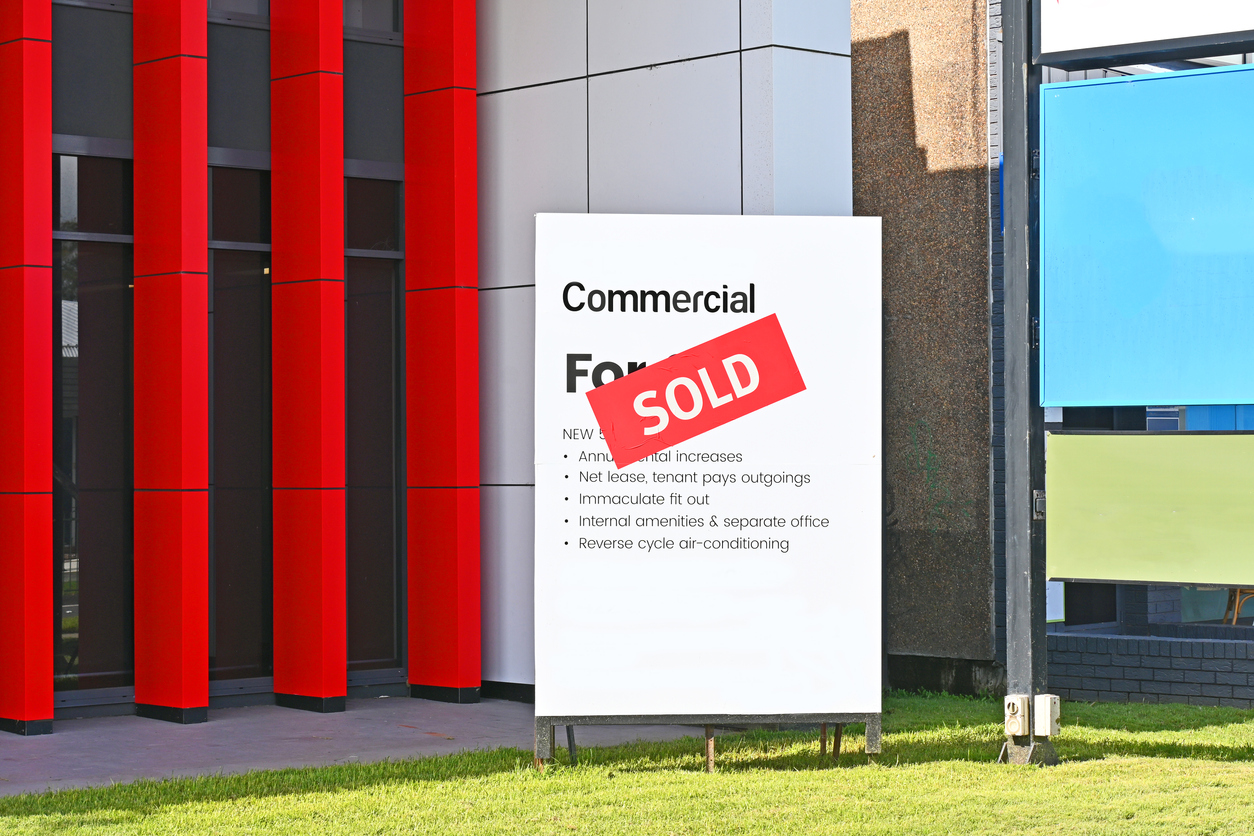A review of common office cladding types and their costs
There is a vast amount of cladding options available on the market, each with varying pros, cons, and costs. While we often get asked which cladding types we would recommend, this can be difficult to answer. It depends greatly on your preferences and what is most important to you — is cost the most significant factor? Or does long-term function trump cost?
Below is a summary of the claddings some of our previous clients have selected. This is by no means an exhaustive list of what options are available, but it covers many of the common types used in commercial/industrial buildings.
Profiled metal cladding
For instance, corrugated or 5-Rib. Although there are many more profiles on the market now, such as products from:
Pros of profiled metal cladding
This type of cladding is the most cost-effective option. The product is low cost, fast to install, does not need painting, and requires minimal maintenance over the life of the building. If a sheet is damaged, it can be very quickly and easily replaced.
Profiled metal cladding is a great option when you don't need an architecturally designed office block and when cost/practicality is the top priority.
Cons of profiled metal cladding
The downside to this type of cladding is that it can make the building look cheap and quite like a shed. In addition to this, some colours such as black can show up dents, bird droppings, spider webs, and other marks.
The cost of profiled metal cladding
This cladding usually costs under $80 per m2 installed. Although this does depend on the profile, colour, gauge, and coating (i.e. Zincalume, ColoursteelR, or ColoursteelR MAXX).
Examples of profiled metal cladding in use
/TractorTech%20aerial%20image-1.jpeg?width=1200&name=TractorTech%20aerial%20image-1.jpeg) Tractor Tech did their offices in 5-rib as part of the workshop area.
Tractor Tech did their offices in 5-rib as part of the workshop area.
/11339%20-%20C-1.jpg?width=1200&name=11339%20-%20C-1.jpg) Transport Repairs Cromwell used red corrugated ColoursteelR for their offices to match their company colours.
Transport Repairs Cromwell used red corrugated ColoursteelR for their offices to match their company colours.
/Shade%20Systems%20exterior.jpg?width=800&name=Shade%20Systems%20exterior.jpg) Shade Systems used dark corrugated cladding around the windows as a cost-effective option that left the other claddings as a feature.
Shade Systems used dark corrugated cladding around the windows as a cost-effective option that left the other claddings as a feature.
Standing seam cladding
Common profiles of this type of cladding include:
- Standing seam tray – Long run roofing
- TRS standing seam long run steel roofing
- Eurotray® double standing seam
Pros of standing seam cladding
Recently this type of cladding has become a popular choice as the standing seam look is currently on-trend. It is a mid-priced product, and as it is precoated, no painting is required, and the maintenance is easy.
Cons of standing seam cladding
As standing seam cladding has a large flat pan it can be prone to dents or ripples showing over time. This type of cladding does require a substrate such as plywood, which adds to the cost as well as the installation time. It is also typically roll formed onsite and installed by specialists, so if you are a long way from a supplier there can be travel costs to consider.
The cost of standing seam cladding
This cladding usually costs around $220 - $300 per m2 depending on the profile, colour, and your location. As previously mentioned, it pays to note that a lot of these profiles also require a substrate.
Examples of standing seam cladding in use
/Blacks%20Fasteners%20(14901%20-%2021.4m%20x%2040m)-1.jpg?width=1200&name=Blacks%20Fasteners%20(14901%20-%2021.4m%20x%2040m)-1.jpg) Blacks Fasteners uses standing seam as the cladding around the offices. The dark colour suits their branding and enhances the large signs and logos.
Blacks Fasteners uses standing seam as the cladding around the offices. The dark colour suits their branding and enhances the large signs and logos.
/Equip%202.2%20for%20website-1-1.jpg?width=1200&name=Equip%202.2%20for%20website-1-1.jpg) The office block in Equip2 is cladded in standing seam. This looks quite smart with the large windows and the square-shaped office block.
The office block in Equip2 is cladded in standing seam. This looks quite smart with the large windows and the square-shaped office block.
Fibre cement board
Such as James Hardie Stria or TITAN.
Pros of fibre cement board
This cladding is cost-effective and is readily available. Another pro to this type of cladding is that it is easy for builders to install so no specialised installers are required.
Cons of fibre cement board
The cladding does need to be painted which can add time to the build schedule. The paint also needs to be maintained and updated as it will fade over time (although this is not always a con if you like to change the color for re-branding etc).
The finish of fibre cement board is not as smart as ACM panels. And while the product is quite stable compared to timber it is not immune from movement over time.
The cost of fibre cement board
The cost for this type of cladding is typically $200-$400 per m2. Factors that affect the cost are mostly labour components such as the quantity of joins and 90-degree angles. Larger flat areas are much faster to install so the rates typically come down.
Examples of fibre cement board in use
/Carters%20tyre%20service%20building-1.jpg?width=1200&name=Carters%20tyre%20service%20building-1.jpg) Carters Tyres uses Titan panel for the office block, which gives a smart flat cladding that can be painted in company branding and colours.
Carters Tyres uses Titan panel for the office block, which gives a smart flat cladding that can be painted in company branding and colours.
/Shade%20Systems%20offices%20and%20canopy.jpg?width=800&name=Shade%20Systems%20offices%20and%20canopy.jpg) Shade Systems used Titan panel for the parapets and feature columns on the front of their offices.
Shade Systems used Titan panel for the parapets and feature columns on the front of their offices.
Aluminium panel cladding
This type of cladding is often referred to as ACM or ALP. See the following websites for examples of this type of cladding:
Pros of aluminium panel cladding
Aluminium panel cladding gives a huge range of design options and provides a very smart look to a building. This type of cladding is also low maintenance, no painting is required, and it is resistant to rust and corrosion.
Cons of aluminium panel cladding
The most notable con to this type of cladding is the cost as it is significantly more expensive than the aforementioned cladding types. Also, as it is a prefinished product it can be difficult to repair if a section is dented as it needs to be replaced rather than filled and painted.
The cost of aluminium panel cladding
Aluminium panel cladding can cost around $400-$700 per m2. The main factors that impact the cost up or down include:
- Angles and joins in the panels. The more of these there is the more work there is for the fabricator/installers.
- The type of panel used. As there is a huge range of materials, colors, and finishes available whichever you choose will impact the price.
- Your location. The fabrication and installation of aluminium panel cladding is a specialised trade, and if there is not a contractor nearby there will be additional travel costs to factor in.
Insulated PIR panels
Often called EPS or ‘freezer panel’. See the following websites for examples of this type of cladding:
Pros of insulated PIR panels
This type of cladding gives a clean monolithic look, which can look quite smart in the right application. As it is a composite type panel it is not as prone to ripples or impact damage as standing seam or other coloured steel profiles are. Insulated PIR panels also have the advantage of being insulated.
Cons of insulated PIR panels
Over the years, insulated PIR panels have had a bad rap for:
- Being a fire hazard. As the original panels used EPS (or polystyrene) this has now been superseded by PIR type products which are fire-resistant and in some cases even have a 60-minute fire protection rating.
- Having a tendency to leak at the joins. This was an issue when the panels only came in 12m lengths and relied on sealants for water tightness. These days the joining details are much more advanced.
Another con worth mentioning is that insulated PIR panels do not perform well acoustically i.e. if left unlined the noise in the building is quite strong.
The cost of insulated PIR panels
This cladding costs approximately $200-$250 per m2. This is affected by the thickness as well as the quantity of the panel (large volumes will reduce the cost per m2 and smaller volumes will increase it). The cost can also be affected by your location and whether you have local contractors who are experienced in the installation of insulated PIR panels.
Examples of insulated PIR panels in use
 Telfers Electrical uses PIR panel above the pre-cast panel, which extends around the whole building.
Telfers Electrical uses PIR panel above the pre-cast panel, which extends around the whole building.
Feature pre-cast
Feature precast columns and panels are becoming quite popular as there are a huge number of finishes available such as exposed aggregate, timber grain, and embossed logos/designs.
Pros of feature pre-cast
Precast panels are very durable and typically fast to install. They also give a clean, modern finish to the exterior of a commercial/industrial building.
Cons of feature pre-cast
The weight of the precast panels can mean that more steel is required in the structure depending on the seismic/earthquake loads in the area.
The cost of feature pre-cast
The cost of feature pre-cast is approximately $350-$500 per m2. This is dependent on the volume and size of the panels i.e. smaller offices with small amounts of precast would cost more. It is also very dependent on the earthquake and wind zones of the building location as higher wind and earthquake loads require stronger panels and larger foundations.
Examples of feature pre-cast in use
To see images of feature pre-cast in use, take a look at the purpose-built Tekplas Hamilton building here.
Other cladding options
The above are by no means the only options available. New products come out every day and the XL team is always open to considering new ideas. There are other cladding types we have used from time to time including:
- Timber cladding such as cedar, board and batten, and weatherboard. Timber cladding is predominantly used on residential projects though as it is often too high maintenance for commercial building owners. However, cedar can be a nice detail in entrance areas or under soffits.
- Aluminium cladding types such as Nu-Wall.
- Brick and block work. Precast is often the masonry method of choice, but feature blockwork can be a nice addition to entrance ways, outdoors areas or columns.
For more inspiration, the below websites are great ones to visit:


